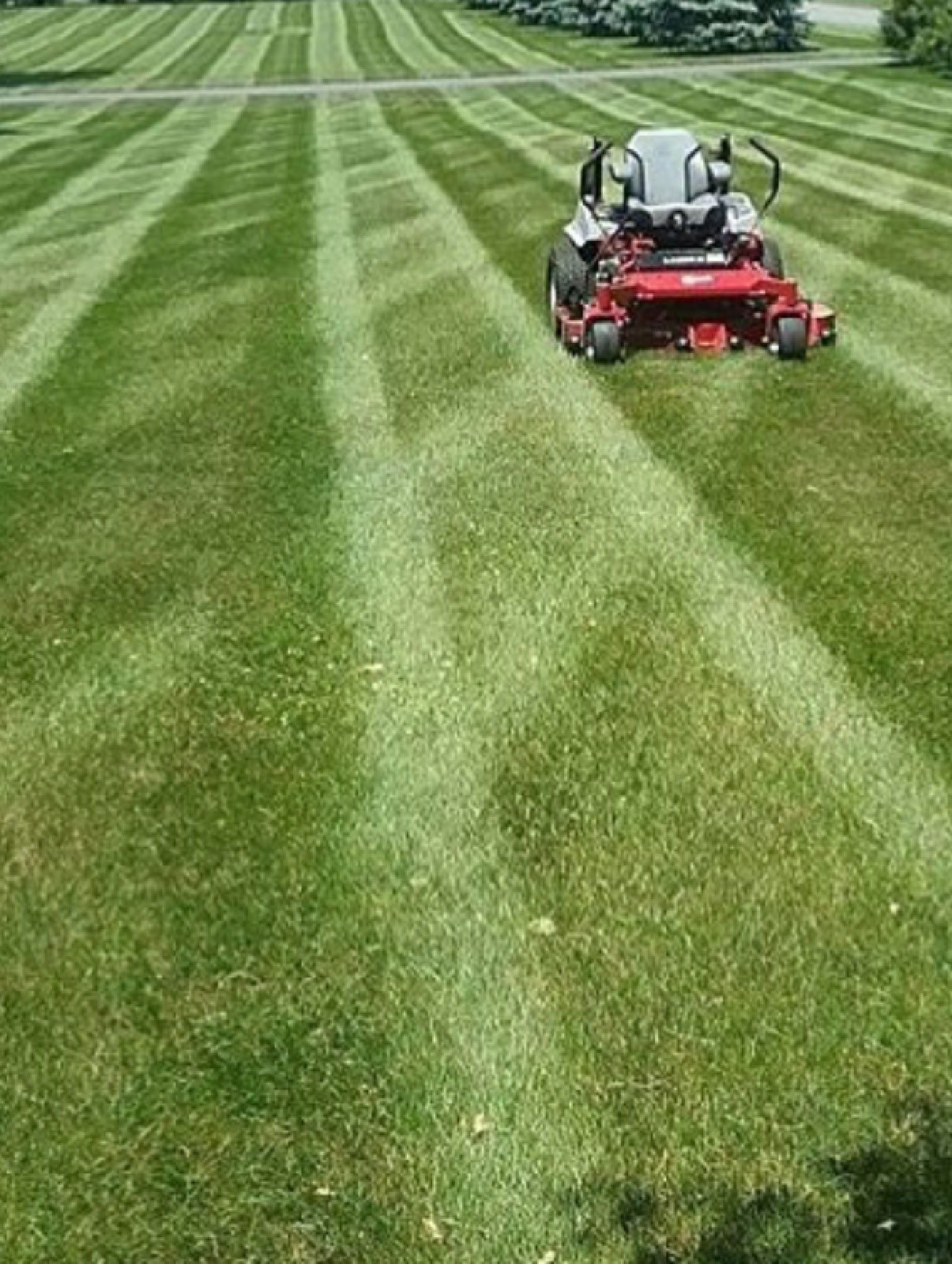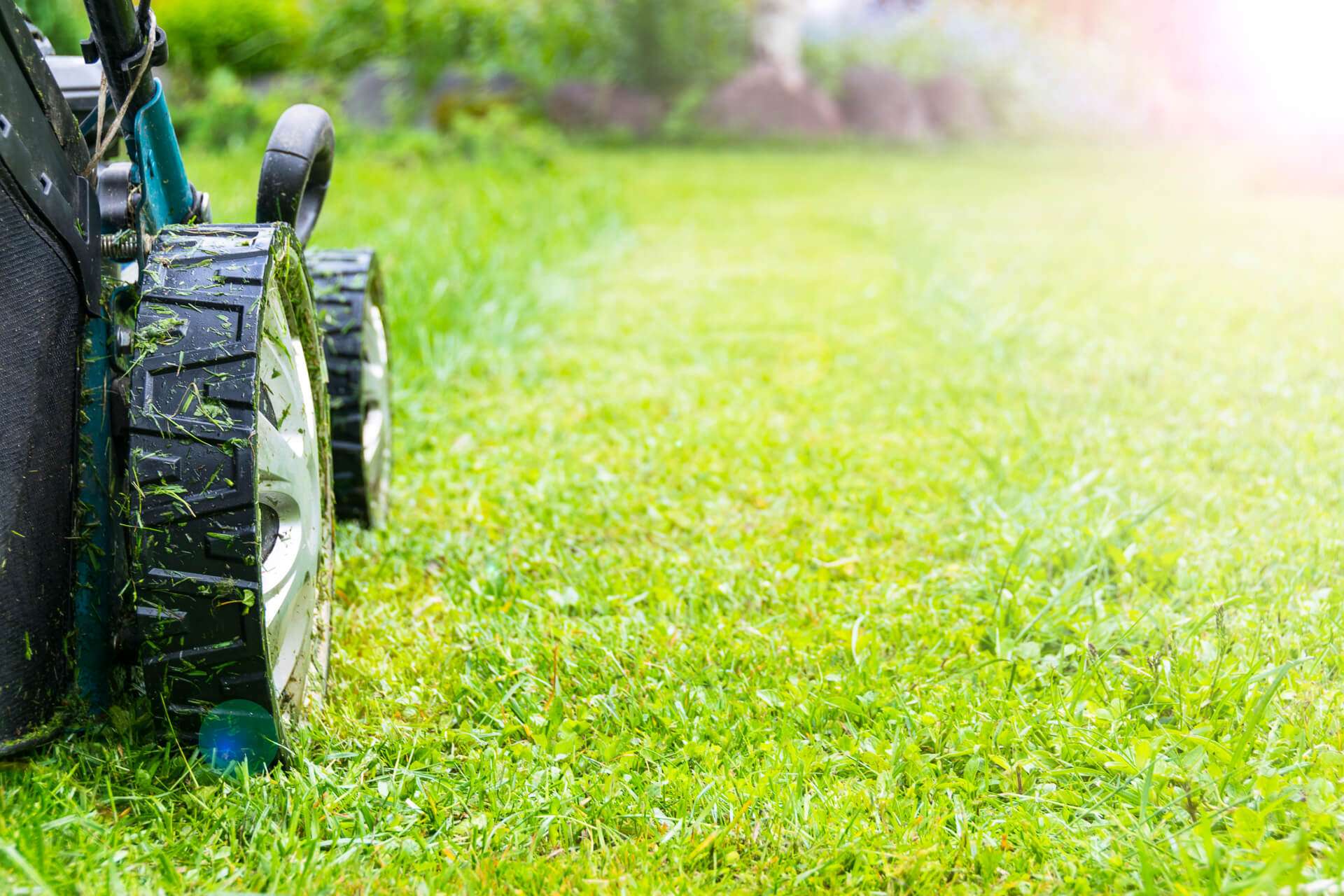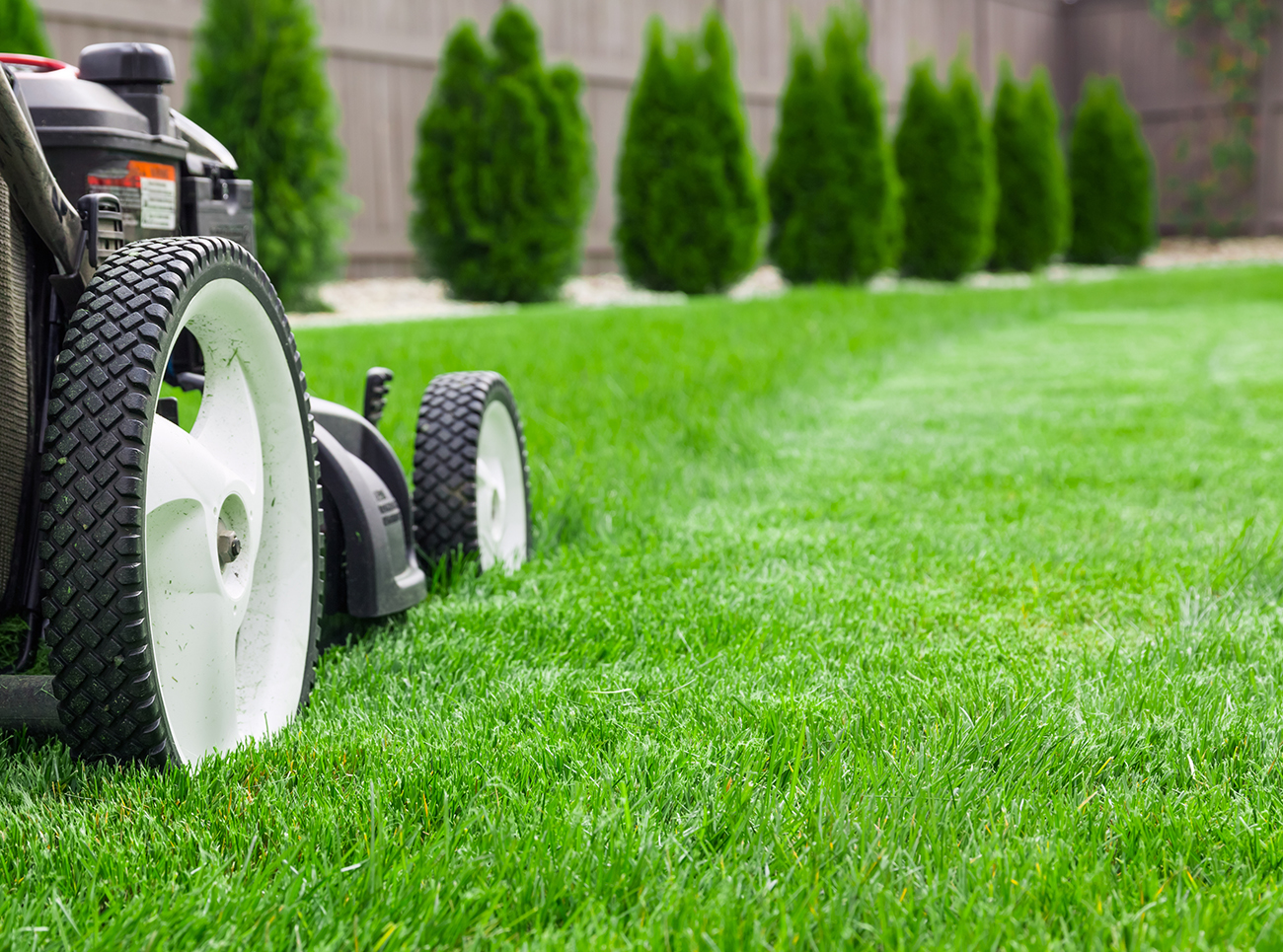Why Polish Lawn Bowls
There are many reasons why you should regularly polish your lawn bowls. The main reason is it protects the surface of the bowl itself. Much like a protective layer, bowls polish can protect from future scratches and scuffs, whilst also removing minor scratches and marks.
Bowls polish is often used as a grip enhancer. Bowl polishes leave a tacky feel to the bowl, which is ideal for most bowlers, and allows them to control the bowl during their deliver technique.
The only reason to avoid polishing your bowls is if you play indoor bowls and a club in your area specifically prohibits its use. Many indoor bowls clubs dislike bowls polish as it can leave traces on the carpet which can have a detrimental effect on its longevity.
Seeding Or Sodding Your Lawn
Overseeding may be needed to increase the density of your lawn. A dense lawn has fewer weeds and is healthier.
Pests, extreme weather conditions and neglect can also damage lawns, even when the soil is in good condition.
If your lawn is a little thin, proper mowing, fertilizing and watering may be all it needs. If that doesnât help, overseeding with a quality lawn seed may be the answer.
Choosing your seed
Choose a grass seed high in Fescue content and low in Kentucky Blue content , remembering to use cool season varieties.
Select a seed mixture that is high in physical seed attributes, such as purity and germination, and also contains the best composition of grass for the use intended.
Soil fertility, moisture availability, sunlight levels and traffic affect the tyope of blend that will provide the best results for your yard.
Look to sow your lawn with a blend of grass seed varieties. Check our local nurseries and garden centres in Calgary for drought tolerant blends of lawn seed.
Adding seed to your lawn
Before you spread the seed over the thin areas, make sure there will be good soil-to-seed contact, and rake away any dead grass or debris.
Dethatchers, aerators or vertical mowers can also be used to prepare the lawn prior to overseeding.
Time your overseeding with a day before rain. Donât do before a hot weather forecast. The seed will need water to germinate.
Apply 900 grams per 1,000 square feet or more if the lawn is thin .
Using sod for your lawn
Weed Control In The Winter
This is the primary lawn care for this season. Annual cool-season weeds grow and flourish during this time if the summer heat didnât kill them. A lawn care guide from North Carolina State University suggests these weeds can be controlled with store-shelf herbicides. They should contain a mixture of 2, 4-D, mecoprop, and dicamba.
Read Also: How Often Should You Put Fertilizer On Your Lawn
Lawn Care Tip #3 Follow These Mowing Best Practices
Avoid the temptation to cut your grass extra short. You might think this will buy you time in between mowings, but grass that is mowed too short is more susceptible to damage from harsh environmental conditions. In Texas, grass thats cut too short runs a greater risk of getting damaged by the hot, dry summer weather.
Another common mowing error is cutting more than 1/3 of the total grass height at a time. We understand the temptation. Your grass grewand grew. You didnt have time to cut it. Once you had a chance to mow, you decided to go ahead and cut the grass down to its recommended height. Ideally, you should adjust the mowing frequency based on how fast your grass is growing, so youll need to mow more often in early spring than in late summer.
Only cut off 1/3 of your grasss total height at a time.
The other problem is, you can damage the lawn if you leave long grass clippings on your property. Those clippings will basically suffocate the healthy grass, preventing nutrients, sun and oxygen from reaching it.
In Texas, our lawns are one of these three turf types: Zoysia grass, Bermuda grass and St. Augustine grass. Zoysia can be mowed at 1½ to 3 inches. Bermuda grass should be mowed to 2 inches in height. And, St. Augustine grass can be mowed to 2½ to 4 inches.
How To Properly Mow Your Lawn

Improve the appearance and health of your lawn. Whether you use a lawn mower or lawn tractorfor larger yards, youll need to know techniques for proper trimming.
- Mow Your Lawn Tall : Longer grass blades are more drought tolerant, encourage deeper roots, and grow thicker to crowd out weeds. Shorter cut lawns need more work to stay healthy, weed-free, and attractive.
- Don’t Cut More Than a Third: Cutting off only one-third of the grass blade length reduces stress and helps to conserve moisture in the plant.
- Keep Your Mower’s Blade Sharp: A dull blade frays grass blade ends, which allow moisture to escape and causes tips to turn brown.
Tip: Leave the clippings on the lawn to conserve moisture and add organic matter back into the soil. And dont forget to use a string trimmeror lawn edger for a crisp, clean finish.
You May Like: How To Get Clover Out Of Lawn
How Much Water Does A Lawn Need In Summer
In the heat of summer, cool season grasses turn brown. Its what they do and is not necessarily a sign of a dying lawn. Warm season grasses on the other hand will stay green during summer, assuming your heatwave isnt extreme and youre not in a severe drought.
You might be surprised to learn that lawns need very little water in the heat of summer to survive. As theyre dormant at this time , growth above and below the soil line nearly comes to a halt. The grass slows its growth to conserve water so that when cooler temperatures return, it has the resources to start growing again.
When dormant, a lawn only needs about 1/4-1/2 inch of water every 2-4 weeks . This is enough to maintain moisture in the roots and crown to let the turf survive until conditions improve. Its certainly possible to keep the lawn lush and green during this time, but it will require inches of water every week at a time when water is becoming a scarce resource.
Keep Pesticide/herbicide Use To A Minimum
Pesticides kill the soil organisms that contribute to a healthy lawn. The sooner you remove harsh chemicals, the faster your soil will recover. Repeated past use of toxic chemicals may have destroyed the microbiotic life that exists in healthy soil it will take time, at least a season, for the soil to begin to recover. If you do use lawn chemicals, clean out pesticide and fertilizer applicators and empty containers on the lawn, where the residue will be utilized. Do not clean out on sidewalks or driveways, or residue will go directly into water supplies. For more information, read Lawn Care Chemicals: How Toxic Are They?
‘Spot-Treat’ Weeds with Vinegar to Minimize Herbicide Use
Where only a few scattered broadleaf weeds such as dandelions or plantain are present, consider spot-treating individual weeds with household vinegar rather than applying a broadcast treatment of an herbicide over the entire lawn. Mix 5 parts white vinegar, 2 parts water, 1 part dish soap, and apply with a hand pump sprayer.
Read Also: When To Spray Lawn For Weeds
Dispose Of Lawn Clippings As Needed
It’s acceptable to leave grass clippings on your lawn unless they begin to form a thick thatch layer. Then remove the clippings and dethatch your lawn as needed.
Tip: If you use chemicals on your lawn, do not add the clippings to a compost pile.
Effective DIY lawn care during spring can save you time and effort later in the year. Follow these lawn care tips to make sure that your grass is greener.
When determining how much grass seed or mulch you need, don’t guesstimate, calculate. Know exactly how much you need with our project calculators.
Shop this Project
What Paint Can I Use On Lawn Bowls
A quality enamel paint can be used on lawn bowls. The paint is only used during the production process on the grips, rings, and the emblems. The rest of the bowl is coloured through the compound used to create the body of bowl itself. Therefore, it is not recommended to paint the surface of a lawn bowl.
Read Also: How To Start Your Own Small Lawn Care Business
Use A Variety Of Ways To Deal With Problems
Pest problems that keep coming back are often a sign that your lawn care practices need to change. These changes can include:
- correcting drainage or fertility problems
- adding lime
- increasing mowing height
- removing thatch
For help in dealing with common problems like weeds, pests, and diseases, see Dealing with lawn problems.
Tip #: Protect Your Yard From Weeds
Weeds steal water and nutrients from your lawn, so eliminating them is a key part of keeping your grass healthy. If youre not sure if a particular type of vegetation is a weed, consult a lawn care professional. Also, reach out to an expert before you use any chemical treatments to ensure you wont inadvertently harm the grass.
Landry pointed out that homeowners sometimes mistake grass for weeds, and customers often call believing they have crabgrass that they would like a landscaper to remove. More often than not, its just another native form of grass, not a weed.
Keeping weeds at bay also leads to healthy flower beds. Weeding and chemicals help, according to Landry, but bark provides an effective weed barrier as well.
Read Also: Who Makes White Lawn Mowers
Tend To Brown Patches
Brown patches in green grass can look unsightly but can be prevented easily if the lawn is given time to breathe and recover over fall.
Ideally, anything that needs to be sitting on your lawn should be moved each day. If this isnt possible, take some time to use fertilizer to help it recover, suggests gardening expert, Laura Schwarze, from outdoor rattan furniture specialists, Luxury Rattan . To prevent brown patches on your lawn, place your outdoor furniture on a patio, decking, or artificial grass to help keep your lawn free. If this isnt an option, make sure to rotate your garden furniture regularly to help prevent damage to your lawn.
Winter Lawn Care Tips

The extreme nature of winter means thereâs very little you can do on your lawn to save the grass from browning or even dying from the freezing ice. However, this doesnât mean you should ignore it completely. For example, you should continue doing regular maintenance work and taking care of grass in preparation for the upcoming and more favorable spring. The following are simple tricks you can try to keep your lawn healthy during winter.
You May Like: What To Do When You Over Fertilize Your Lawn
Watering Your Lawn For Great Results
Generally, lawns need about one inch of water per week, which is best done in one or two applications, including rainfall. Install a simple rain gauge in your yard to measure rainfall and irrigation each week. The best time to water is from 4am to 8am. This allows the grass to dry in the morning sun, reducing the chance of turf disease.
Short, daily irrigation is unnecessary, too light and too shallow to support deep grass roots.
Pro Tip: Fine fescues are among the most drought tolerant varieties of lawn grass and will bounce back from dry spells faster than other grass types. Letting fine fescues grow taller helps preserve soil moisture.
Convert Your Lawn To A Drought
Conventional lawn seed was originally developed to be fast growing to feed livestock. Eco-Lawn grass seed is a drought-resistant blend of grasses that requires little or no mowing and no fertilizer. The mix grows in full sun, partial shade, and even deep shade, making it one of the most versatile lawn seeds around. Its rich green blades are also less vulnerable to insects and grubs. To switch to this kind of lawn, use one of the following methods:
Also Check: How To Green Up Lawn
Tip #: Know When And How To Fertilize Your Lawn
Different types of fertilizer contain different percentages of nitrogen and other nutrients. As previously mentioned, your soils pH can determine which type of fertilizer is best for your lawn. Landry recommends finding a local company that makes fertilizers specifically designed for the conditions in your area.
Its also important to give your grass the right amounts of fertilizer at appropriate intervals. Using the wrong amounts or reapplying too soon can damage your lawn.
How To Have A Healthy Lawn
Like many Canadians, you probably take pride in having an attractive lawn. Find out how to care for your lawn as easily as possible, while reducing the need for pesticides!
Many people use lawn care products like herbicides and insecticides to maintain their lawns. But “cosmetic” pesticide use is now restricted and even banned in many communities across Canada.
There are ways to have a healthy lawn without using pesticides. And when you do have to use pesticides, there are ways to use them safely.
Don’t Miss: How To Stop Weeds From Growing In Lawn
What To Do About: Thinning Grass And Bare Spots
Weather extremes, playing with kids, and horseplay with the dog are all examples of ordinary activities that can cause the grass to thin. You may need to plant fresh sod or extensively seed the afflicted area, depending on the size of the barren areas. Make sure the grass treatment you use is prepared specifically for the environment and grass type. If the grass is thin in certain areas, overseeding it in the fall might help it recover before winter arrives. If you want to overseed the grass, start at least 45 days before the first frost of the season.
What To Do About: Watering
Lawns thrive when they are watered appropriately. Depending on the location, be wary of over- and under-watering. Shallow, frequent irrigation promotes shallow roots that are vulnerable to drought and other stresses. You can cut consumption, save money, and produce healthier, more robust grass by using smart watering methods and water-conserving grass types. Watering and other lawn duties may naturally change month to month as you follow your yearly lawn care plan, but you should constantly take into account what’s going on with the grass.
You May Like: Who Sells Weed Eater Riding Lawn Mowers
First Mow Of The Year
The first mow of the year shouldn’t be about a specific date but should be determined by the height of your grass. As grass wakes up from it’s long winter slumber in and starts to grow again in March or April, the first mow will trim off winter damage. Begin with a low cut, use the second lowest setting on your mower, this will allow sunshine to better absorb into the soil. After the first mow, move your setting to the second highest for the rest of the season.
Mow Grassbut Not Too Soon

Mow the lawn when the grass level reaches 2 to 3 inches tall. The lawn needs time to recover after winter. However, if the grass grows too long, it shades the roots, which allows fewer weed seeds to sprout. If you use a traditional lawn mower, spring is the time to clean the filter and spark plugs. Its important to sharpen the mower blade every month or two for a clean cut. When you just rip grass and leave it with open cuts, you leave your yard susceptible to fungi and disease. See more about lawn care.If youre interested in alternative mowers, consider a reel mower or an electric mower as a more environmentally-friendly option. These mowers work best if your property is one-third of an acre or less. Its important to mow your grass regularly, as its much more difficult to cut the grass if it gets way too tall .Of course, we have to mention that there are alternatives to grass as well! Many folks are starting to use more ground cover plants , walkways, and wider flower beds. Theres also a growing trend to add vegetable garden beds or to integrate edibles into your front yard. See more about edible landscaping!
You May Like: When Do You Apply Fertilizer To Your Lawn
When To Fertilize Your Lawn
- Only use lawn fertilizers between April 1 and December 1.Why? Its actually NY State law.
- Allow grass to come out of winter dormancy before applying fertilizer. Grass only absorbs fertilizer when it is actively growing .
- Dont waste time and money on summer fertilizers! Heat stress and drought slow grass growth and fertilizer can burn your lawn in the heat.
Fertilization Schedule for Long Island:
Mid-April to May No more than 1 lb. slow-release nitrogen per 1,000 sq. ft. .Leave clippings on lawn to recycle nutrients and organic matter.
September BEST TIME FOR FEEDINGNo more than 1 lb. slow-release nitrogen per 1,000 sq. ft. .Leave clippings on lawn to recycle nutrients and organic matter.